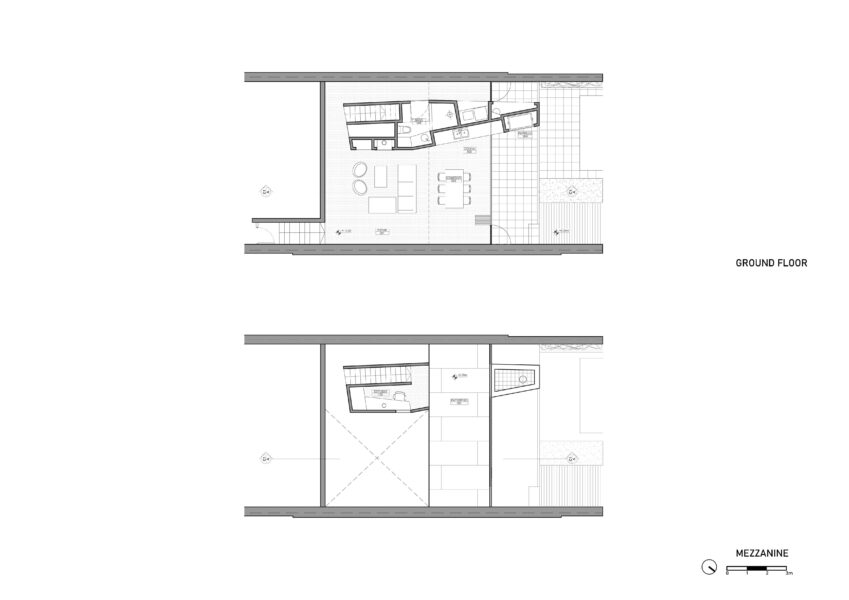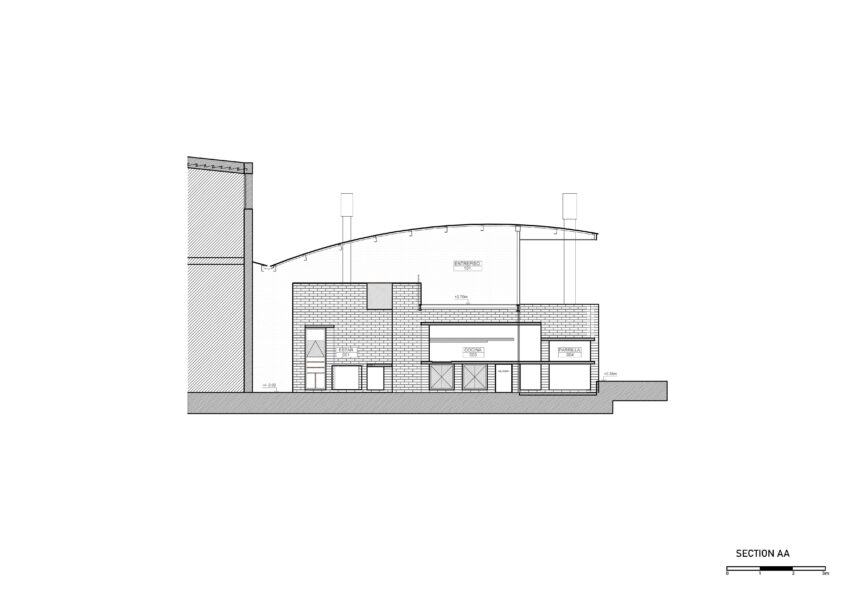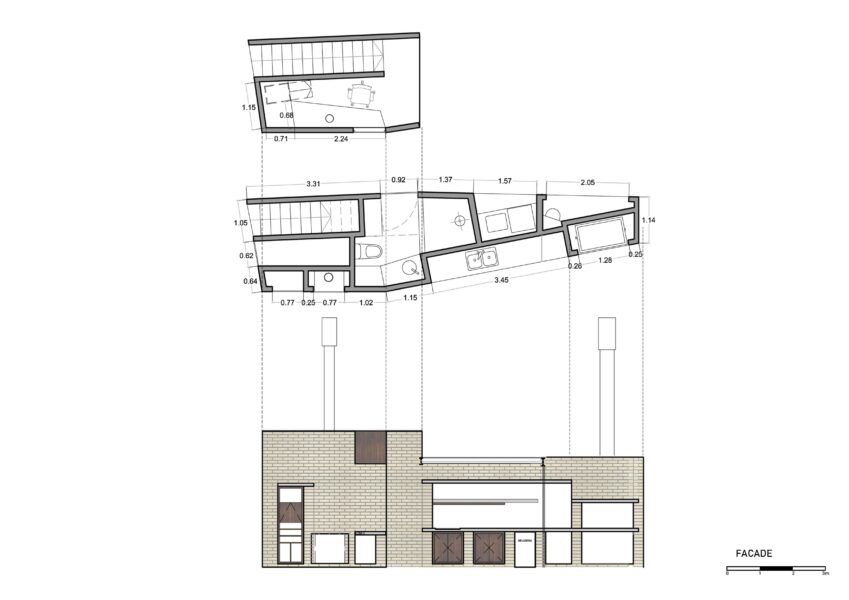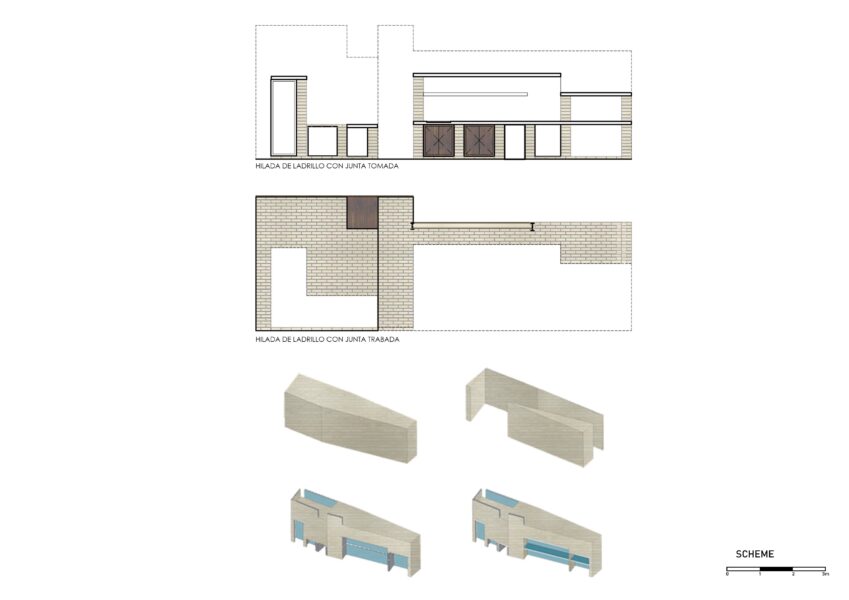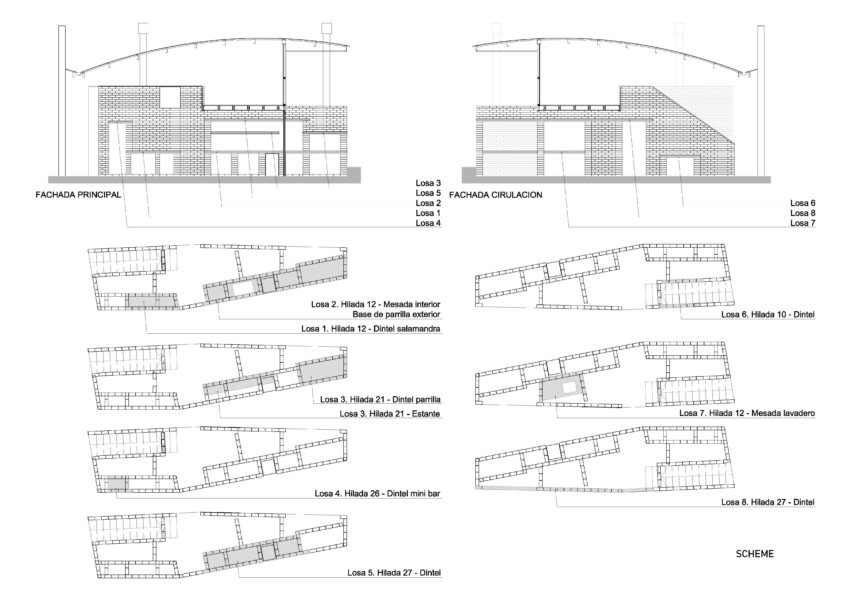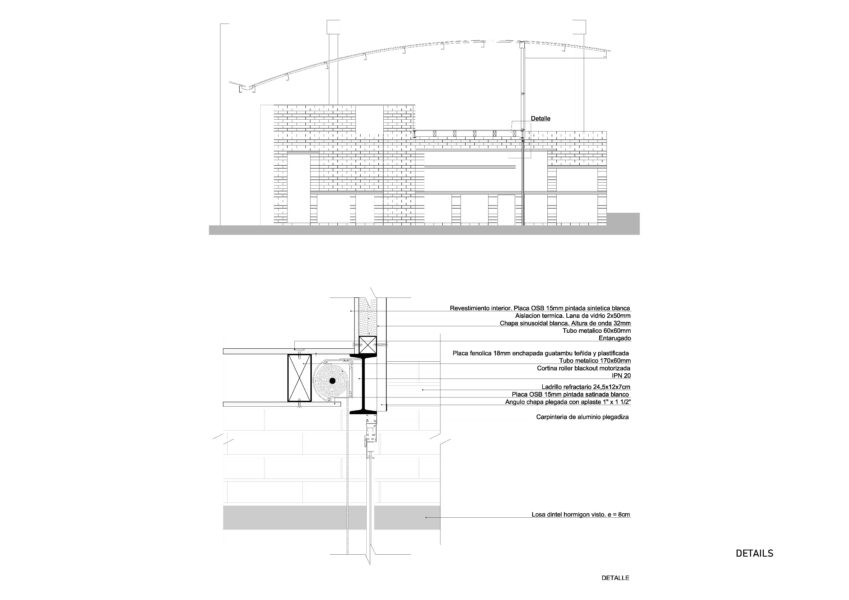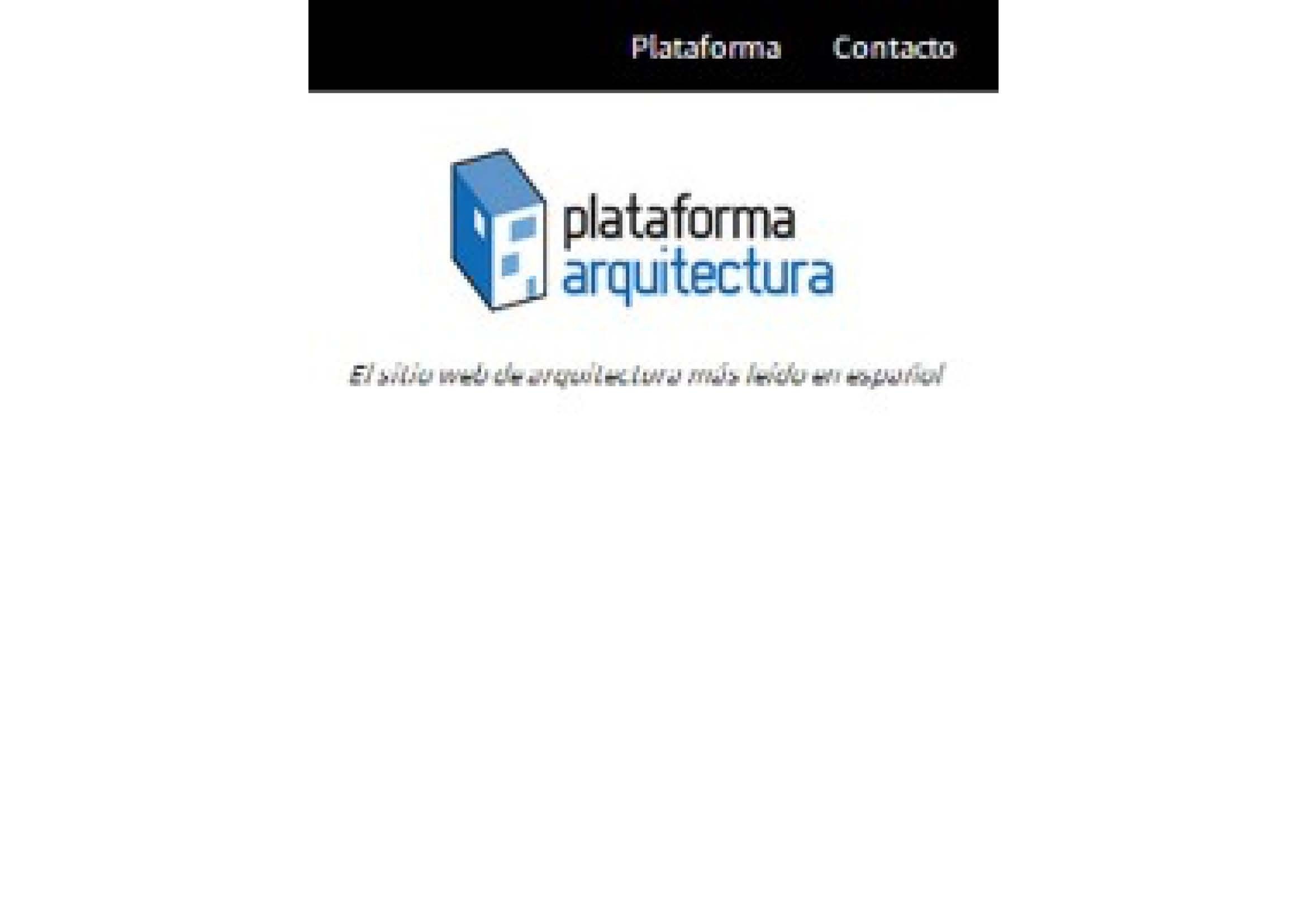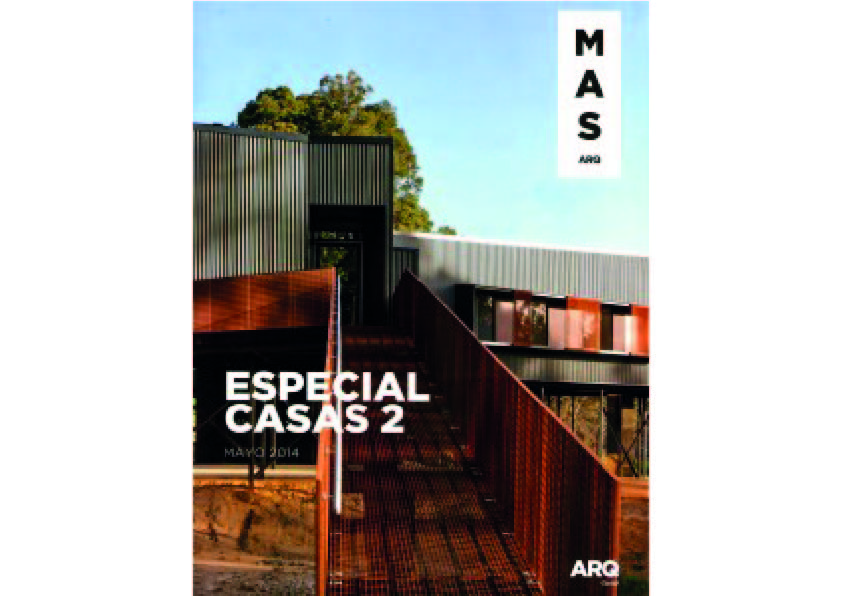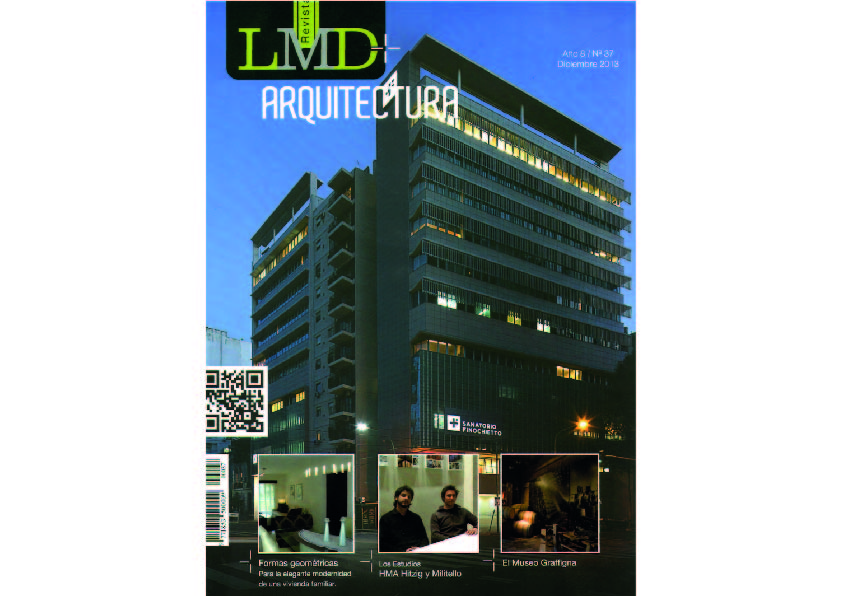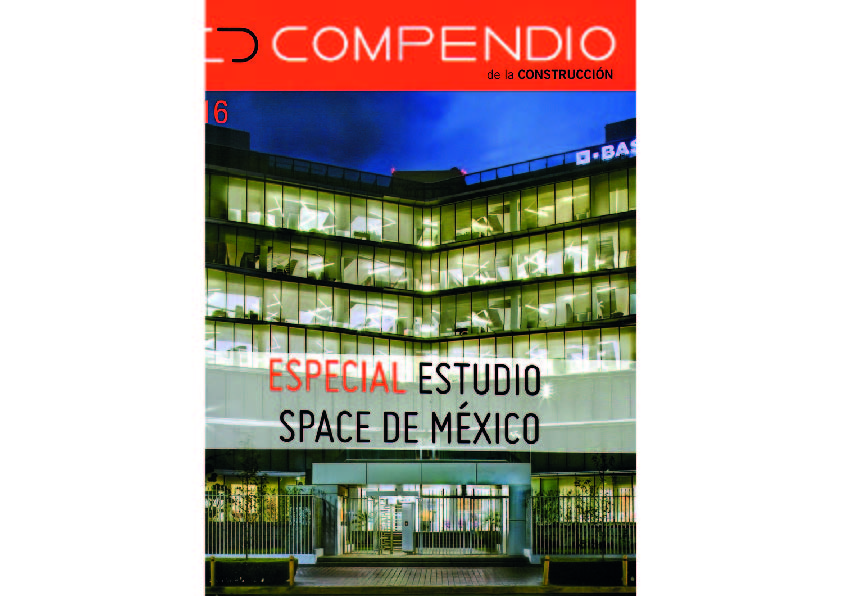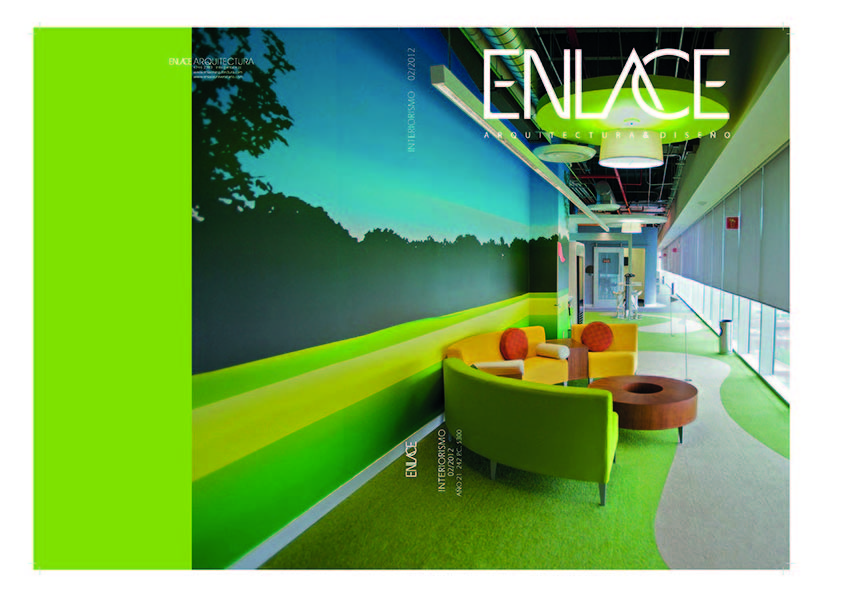The chosen constructive system is grey isolating refractive brick, though which we have sought an interpretation of different densities starting with choosing different blockings, rowing each of its voids through concrete slabs, thus providing a different visual and constructive perspective to the monochromatic receptacle of the whole.
The functional ubiquitousness of this piece is such that it not only serves from the totality of the services, but it also connects the space vertically, containing a staircase in one of its cells. The mezzanine is built from a light system and covered with phenolic plaques, and it solves the issue of spaciousness without ceasing to be served by this piece , one which always expects to be the protagonist by containing the space of the desk as well as an access to the semi-covered expanse.
The technological solution of the outer shell solves the cover through a curve metal plaque, which continues all the way until it completes the whole façade. The latter is operated through superior openings that solve the inner illumination, and inferior openings with a technology that allows them to unify space-wise the inside with the outside.
The monochromatic Choice of the outer shell (both in its inner as well as its outer side) as well as the radicalization of the use of metal plaques that are continuous from its cover until the totality of its façade, are a clear evidence of the respect shown for the ubiquitousness of this piece. Its modest eagerness for absence is such that on its ground floor it clears the way for this virtuous piece, as if it the functional balance of the whole depended solely on it—which is, by the way, the correct interpretation of this project.
